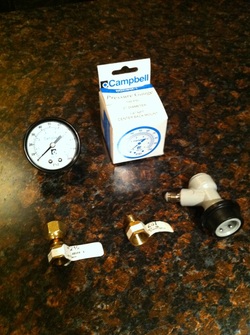
In my process, I rack the beer and immediately put it on warm gas at around 28-30 PSI. Once it sits this way for about a week, the beer will be fully carbonated and then goes in the keezer to cool to serving temp.
If you need the beer carbonated a little more quickly, cool it immediately and put it on gas at 35 PSI. Since CO2 absorbes in cold liquid faster, it should be nicely carbed after about two days.
[Read More]
